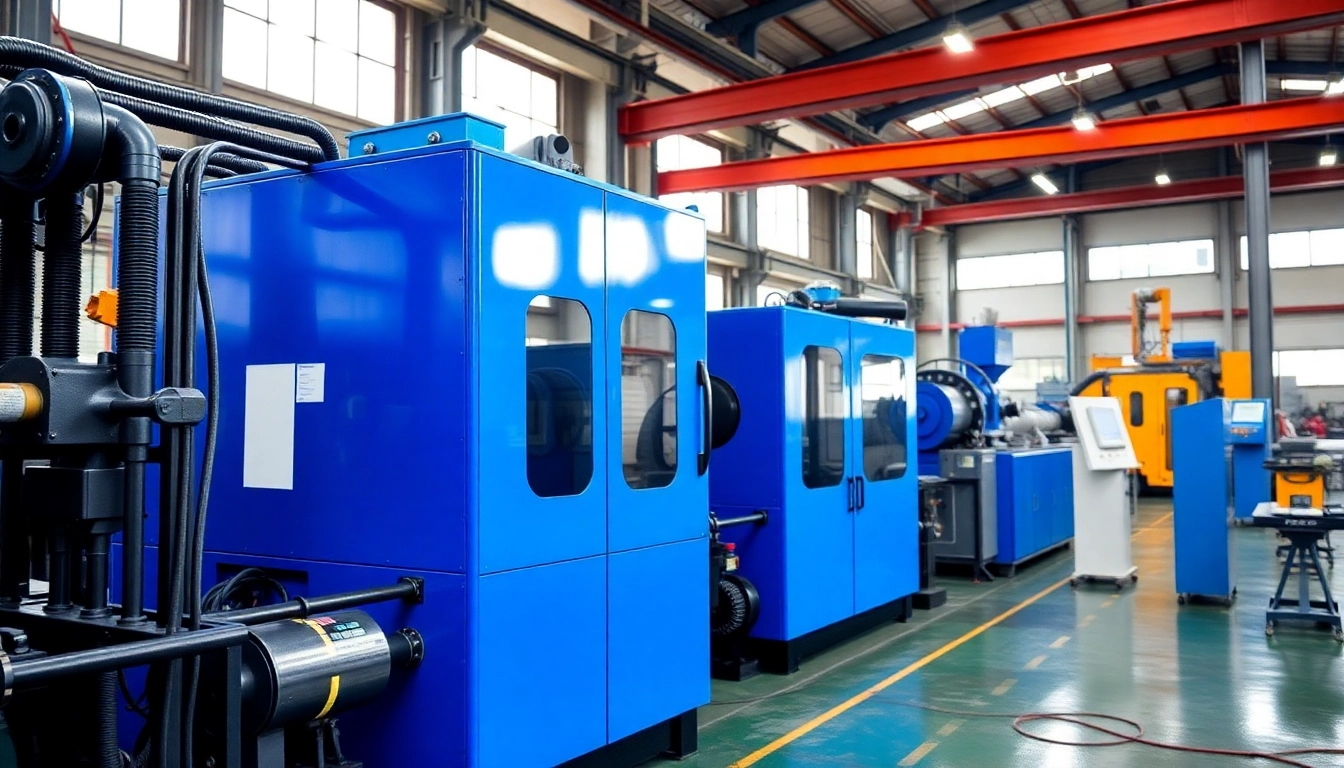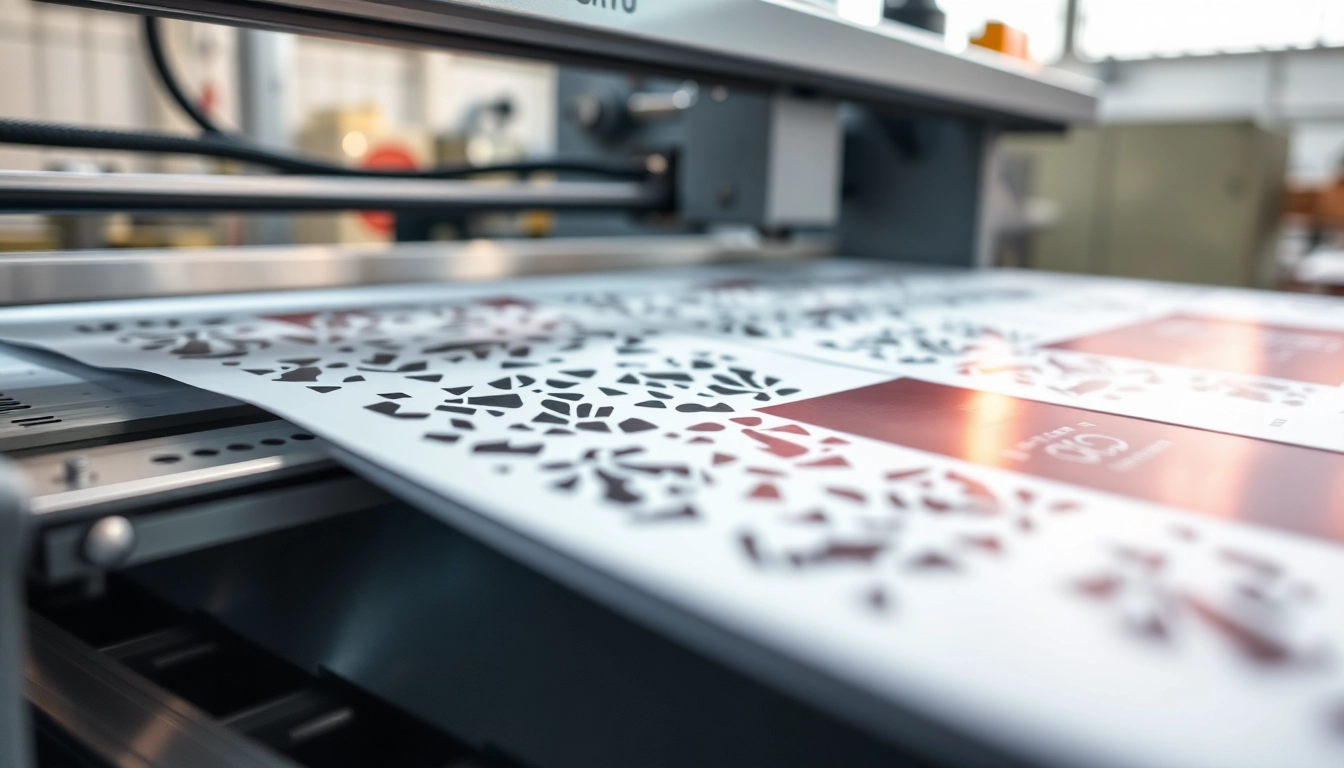Understanding Blow Molding Technology
What is Blow Molding?
Blow molding is a manufacturing process used to create hollow plastic parts by inflating a heated plastic tube, called a parison, within a two-part mold. This technique is crucial for producing items like bottles, containers, and automotive parts. The blow molding process involves heating thermoplastic materials until they become pliable and then mechanically inflating them under controlled conditions. The precision and efficiency of this method make it a preferred choice among Blow Molding Machine Manufacturers worldwide.
Types of Blow Molding Techniques
There are primarily three types of blow molding techniques: Extrusion Blow Molding (EBM), Injection Blow Molding (IBM), and Stretch Blow Molding (SBM).
- Extrusion Blow Molding (EBM): In this method, a continuous tube of plastic is extruded and then inflated into a mold. This process is often used for producing larger, hollow items such as containers and tanks.
- Injection Blow Molding (IBM): This process combines injection and blow molding. A preform is first produced using injection molding, which is then blown into the final shape within a mold. IBM is typically used for producing smaller, more complex items such as bottles.
- Stretch Blow Molding (SBM): This technique involves stretching the preform before blowing it into shape, enhancing the material’s properties and clarity. SBM is commonly used for producing sophisticated containers like PET bottles.
Applications of Blow Molding Machinery
Blow molding machinery has a diverse range of applications across various industries. Some notable applications include:
- Beverage Industry: Producing bottles for carbonated and non-carbonated drinks.
- Pharmaceuticals: Creating rigid and transparent containers for medical products.
- Automotive: Fabricating lightweight parts such as air ducts and fuel tanks.
- Toys and Household Goods: Manufacturing items such as plastic toys, storage containers, and more.
Choosing the Right Blow Molding Machine Manufacturer
Key Factors in Selection
Selecting the appropriate blow molding machine manufacturer requires a thorough understanding of several key factors. There are numerous manufacturers in the market, each offering varying levels of technology, support, and pricing. Here are the key aspects to consider:
- Technology and Innovation: Look for manufacturers that offer the latest technology and innovative features that can enhance production efficiency and product quality.
- Customization Options: Consider manufacturers that allow for customization of the machines to suit specific production needs.
- Pricing Structure: Evaluate the cost of the machines in relation to their features and the expected ROI.
- Customer Support: Assess the level of technical support and maintenance services provided post-purchase.
Evaluating Manufacturer Reputation
Reputation is pivotal in the selection of a blow molding machine manufacturer. An established manufacturer is likely to have a solid track record of delivering high-quality machines consistently. Conduct research on potential manufacturers through:
- Customer Reviews: Look for testimonials and case studies from previous customers to gauge satisfaction levels.
- Industry Awards and Certifications: Recognitions from reputable industry bodies can indicate a manufacturer’s commitment to quality.
- Longevity in the Market: Manufacturers with decades of experience are often more reliable and knowledgeable about industry trends.
Cost vs Quality Considerations
When choosing a blow molding machine manufacturer, finding the right balance between cost and quality is crucial. While it may be tempting to choose the lowest priced option, it is essential to consider the long-term implications of lower quality. Factors to consider include:
- Initial Investment vs. Long-Term Costs: Often, a higher upfront cost translates into lower maintenance and operational costs in the long run.
- Machine Lifespan: Quality machines may come at a higher price but offer greater durability, resulting in fewer replacements and repairs over time.
Innovations in Blow Molding Machinery
Modern Features and Technologies
As the blow molding industry evolves, so do the technologies and features within blow molding machinery. Significant advancements include:
- Energy Efficiency: Modern machines are designed to reduce energy consumption, leading to lower operational costs and increased sustainability.
- Automation: Features such as automated loading and unloading, along with real-time monitoring systems, minimize human error and enhance productivity.
- Advanced Material Handling: Improved systems for handling resins and regrinds allow for higher efficiency and lower waste.
Industry 4.0 Integration
The integration of Industry 4.0 concepts into blow molding manufacturing is reshaping the landscape. Some key areas of focus include:
- IoT Connectivity: Machines equipped with Internet of Things (IoT) technologies can communicate performance data in real-time, enhancing decision-making capabilities.
- Predictive Maintenance: By utilizing data analytics, manufacturers can predict when machines need servicing, reducing downtime and extending equipment lifespan.
- Smart Controls: Advanced control systems enable more precise adjustments, improving production quality and consistency.
Future Trends in Blow Molding
The blow molding industry is on the cusp of significant transformation, driven by sustainability, demand for customization, and technological advancements. Future trends may include:
- Sustainable Materials: An increased focus on using biodegradable and recyclable materials in production processes.
- Customization: As consumer preferences evolve, manufacturers may shift towards more flexible production processes that allow for customized designs and features.
- Enhanced Safety Features: Innovations aimed at improving operator safety will become even more integrated into machine designs.
Maintenance and Support for Blow Molding Machines
Routine Maintenance Tips
Proper maintenance is critical to ensuring durability and efficiency in blow molding machines. Routine maintenance practices should include:
- Daily Inspections: Conduct thorough checks of the machine components to identify wear and tear.
- Lubrication: Keep moving parts properly lubricated to minimize friction and wear.
- Regular Cleaning: Maintain cleanliness around the machine to prevent dust and debris from affecting operations.
Finding Reliable Spare Parts Suppliers
Access to quality spare parts is essential for quickly addressing issues and minimizing downtime. Tips for finding reliable suppliers include:
- Reputation: Look for suppliers with positive reviews and a proven track record of reliability.
- Quality Assurance: Ensure parts are original or certified to meet OEM standards.
- Timely Delivery: Choose suppliers that can provide quick delivery options to minimize operational delays.
Understanding Manufacturer Support Services
When selecting a blow molding machine manufacturer, consider the level of support they provide. Key aspects of effective manufacturer support services include:
- Technical Support: Access to trained technicians who can assist with troubleshooting and repairs.
- Training Programs: Comprehensive training programs for operators and maintenance personnel to maximize machine efficiency.
- Warranty and Service Plans: Robust warranty and service plans that cover parts, labor, and ongoing maintenance.
Case Studies: Successful Blow Molding Implementations
Industry Leaders and Their Success
Several industry leaders have leveraged advanced blow molding technologies to optimize production and achieve sustainability goals. A notable example includes:
Uniloy’s innovative use of multi-layer blow molding technology has allowed companies to reduce material usage while improving the integrity and quality of their products. This technique facilitates the creation of containers with different properties, ideal for specialized applications within the beverage and medical industries.
Lessons Learned from Implementation
From these implementations, several valuable lessons can be drawn:
- Importance of Workforce Involvement: Engaging operators early in the process leads to smoother transitions and improved adoption of new technologies.
- Focus on Real-Time Monitoring: Utilizing data analytics helps in identifying inefficiencies and areas for improvement rapidly.
Best Practices for Optimizing Production
To fully leverage the potential of blow molding machines, companies should consider the following best practices:
- Regular Training: Ongoing training programs can help workers keep up with new technologies and operational procedures.
- Data-Driven Decision-Making: Implementing analytics tools can enhance productivity by providing actionable insights based on machine performance data.
- Cross-Functional Collaboration: Encouraging collaboration between production, engineering, and supply chain teams can lead to streamlined processes and improved output quality.


